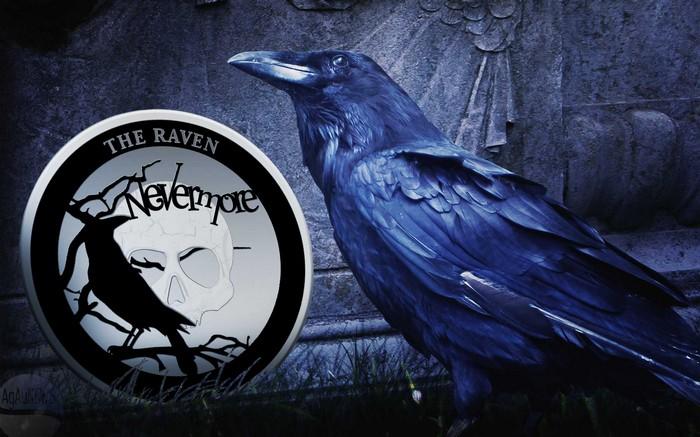In the realm of American literature, few poems have captured the imagination and intrigued the minds of readers as Edgar Allan Poe’s “The Raven.” First published in January 1845, this narrative poem is a masterpiece of dark romanticism, blending elements of horror, melancholy, and the supernatural. Its significance lies not only in its artistic merit but also in the way it reflects Poe’s unique genius and the cultural and historical context of its time. This article delves deep into the background, content, analysis, and lasting impact of “The Raven,” shedding light on why it remains a pivotal piece in the landscape of American poetry.
The Genesis of a Gothic Masterpiece
To understand the allure of “The Raven,” it’s essential to explore its origins. Poe, a writer known for his tales of mystery and the macabre, claimed the poem was a result of methodical composition, adhering to his principle of creating a total effect of beauty and sadness. Despite this assertion, some biographers suggest that “The Raven” was inspired by personal grief, particularly the illness of Poe’s wife, Virginia, which mirrors the poem’s themes of loss and mourning.
A Symphony of Despair
“The Raven” tells the story of a man mourning the loss of his beloved, Lenore. One bleak December night, while he is reading “forgotten lore” to distract himself from his sorrow, a raven enters his chamber, perching “upon a bust of Pallas” above his door. The bird’s repeated utterance of “Nevermore” plunges the narrator into deeper despair, as he interprets its presence and its single word as an omen of his eternal separation from Lenore and, metaphorically, from hope and joy.
The structure of “The Raven” is meticulously crafted, with eighteen stanzas of trochaic octameter, a deliberate choice that reinforces the poem’s somber rhythm and mood. Poe’s use of internal rhyme, alliteration, and repetition—most notably the haunting refrain “Nevermore”—enhances its musicality and memorability, embedding the poem deeply in the reader’s mind.
Shadows of Meaning
At its core, “The Raven” is a complex exploration of grief, loss, and human longing for the unattainable. The raven, with its black plumage and eerie presence, symbolizes death and the inevitability of fate, serving as a grim reminder to the narrator of his powerlessness against the forces of nature and time. The use of the bust of Pallas Athena, the goddess of wisdom, suggests that not even wisdom and reason can protect the human heart from the emotional depths of despair and longing.
Furthermore, “The Raven” can be seen as a reflection on the nature of art and the artist. The narrator’s attempt to find solace in “forgotten lore” represents the human tendency to seek escape in creativity and imagination, while the raven’s disruption of this pursuit echoes the intrusion of reality into the realm of thought and fantasy. This interplay between the ideal and the real encapsulates Poe’s own struggles as an artist and individual.
Echoes Through Time
“The Raven” was an immediate success upon its publication, propelling Poe into the limelight of the literary world, albeit briefly. Its impact extended beyond the boundaries of literature, influencing the fields of art, music, and popular culture. The poem’s mesmerizing rhythm, evocative imagery, and profound themes have inspired countless adaptations, interpretations, and homages, from classical compositions to modern media.
Critically, “The Raven” stands as a testament to Poe’s genius in manipulating language and form to evoke deep emotional responses. It exemplifies his theory of the “unity of effect,” where every element of a work of literature contributes to a single emotional or thematic impact on the reader. This principle has influenced not only poets and writers but also artists and creators across various mediums seeking to achieve a similar cohesion and intensity in their works.
Moreover, “The Raven” has played a crucial role in the development of American Gothic literature, highlighting the exploration of the darker aspects of the human psyche and the complexities of emotional suffering. Its enduring popularity attests to its universal themes and its ability to resonate with readers across generations and cultures, proving the timeless nature of Poe’s artistry.
Conclusion
Edgar Allan Poe’s “The Raven” remains a cornerstone of American poetry and Gothic literature, a masterpiece that continues to captivate and haunt those who traverse its lyrical depths. The poem’s exploration of loss, despair, and the human condition, coupled with its innovative use of language and form, has cemented its place in the literary canon. Through “The Raven,” Poe has woven a tapestry of melancholy and beauty that echoes through the annals of literature, a testament to the enduring power of poetry to touch the deepest recesses of the heart and mind. As we revisit and reinterpret this iconic work, its shadows linger, evermore significant, in the collective consciousness, a symbol of the eternal dance between darkness and light, despair and hope, mortality and the quest for meaning in the vast, inscrutable expanse of human existence.

